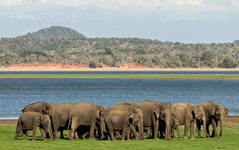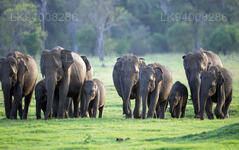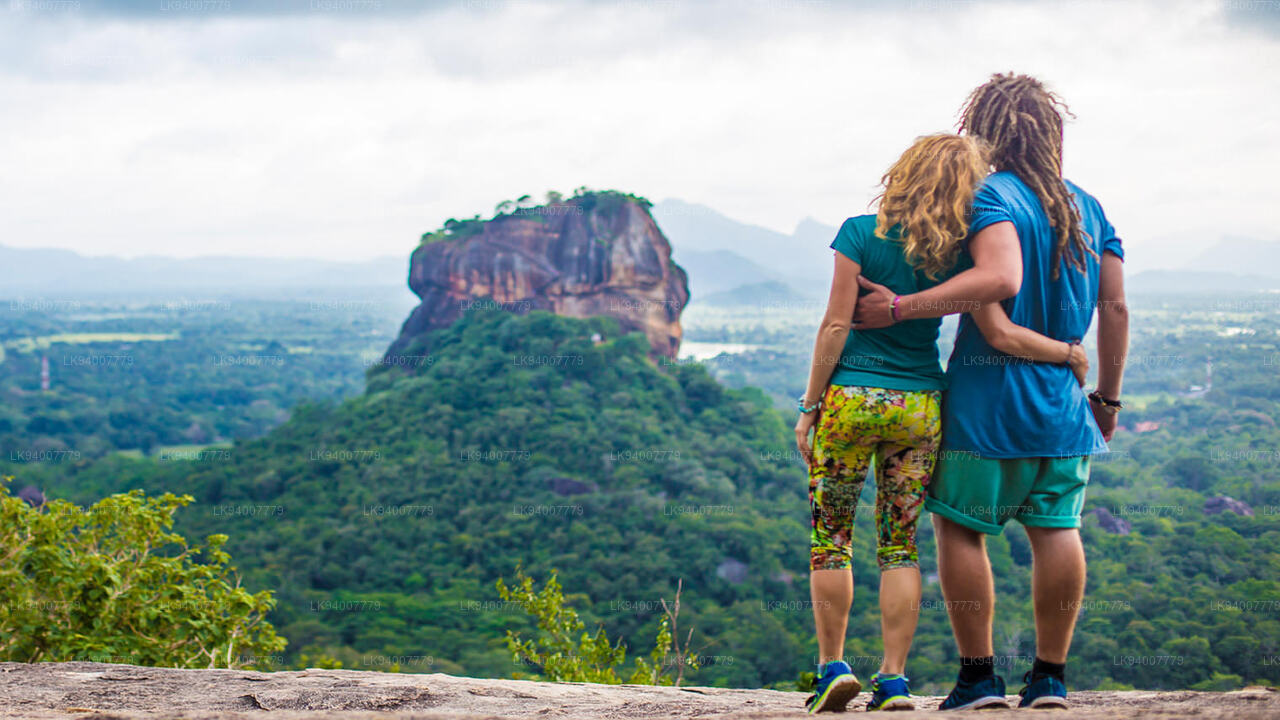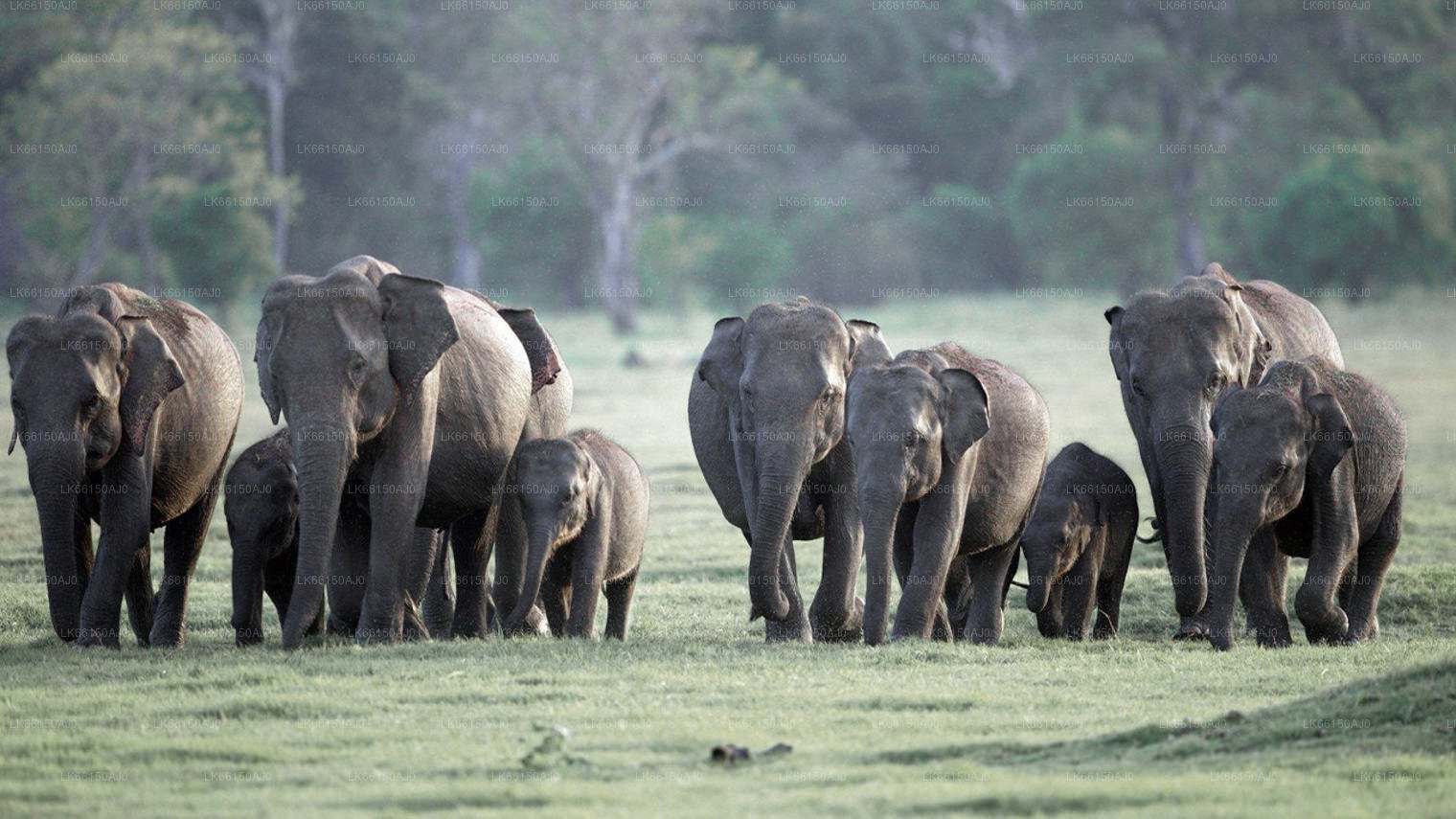
Ciudad de Minneriya
Minneriya, ubicada en Sri Lanka, es famosa por su Parque Nacional, un punto clave de biodiversidad y hogar de una gran población de elefantes asiáticos. El punto focal del parque es el pintoresco Tanque de Minneriya, que atrae a los amantes de la vida silvestre y ofrece un escenario espectacular para safaris naturales.
Elephant Gathering
Around August & September every year, the receding banks of the Minneriya Lake create one of the most unique scenes you will ever see. A mass exodus of elephants create the World famous ‘Minneriya Elephant Gathering‘. A sight to behold and a must see if you happen to visit Sri Lanka!
One of the most spectacular natural scenes you will ever see! The Elephant Gathering at Minneriya is a sight to behold. During the dry season (July to September) water supplies reduce drastically in this region. To cope with this, the elephants congregate around the Minneriya reservoir where grasses are rich and fertile. The elephants come from areas beyond the reservoir and at times herds with numbers as large as 300 ~ 400 can be seen.
For any observer this is an incredible moment since this is not only a simple elephant migration. The animals here socialize, bathe and even find mates. It is a unique phenomenon of nature and can only be witnessed in this park. In fact it is so amazing it was recently listed as the Top no. 6 in the Lonely Planets’ guide to wildlife spectacles of the world.
This amazing sight known as ‘The Gathering’ is world famous for its large number of elephants. In the period of drought, the water level drops, revealing a tank bed that allows the grass to grow. During this time The Minneriya reservoir becomes a playground where the elephants can satisfy their water needs. The Gathering peaks during August & September at the height of the drought.
According to authorities the Elephant Gathering at Minneriya is the largest grouping of Elephants at one time in Asia. This event probably dates back centuries and the creatures a have done it multiple times but it has only gained mainstream attention quite recently.
You could also see this amazing sight for yourself with us in the Minneriya National Park by booking a Minneriya Safari.
Elephant Migration between Minneriya, Kaudulla and Hurulu Eco Park
There are three national parks in the close proximity within that region. They are the Minneriya National Park, the Kaudulla National Park, and the Hurulu Eco Park,. All of the three parks are immensely popular among locals and foreigners the world over for their large herds of elephants. Generally, each year during the months of July to September large groups of elephants are found in the Minneriya National Park and then they migrate to Kaudulla National Park during the months October to November due to high rains and lakes getting filled up. Then the elephants move on to Hurulu Eco Park for the final leg of their migration during the month of December to January.Acerca del distrito de Polonnaruwa
Polonnaruwa es la segunda ciudad más grande de la provincia centro-norte de Sri Lanka. La antigua ciudad de Polonnaruwa ha sido declarada Patrimonio de la Humanidad por la UNESCO. Polonnaruwa cuenta con una larga historia de conquista y lucha, y con razón constituye el tercer elemento del Triángulo Cultural. Ubicada a unos 140 km al noreste de Kandy, Polonnaruwa ofrece horas de inagotable placer para los amantes de la historia y la cultura, gracias a sus numerosos lugares de interés.
Gran parte de las ruinas que aún se conservan se atribuyen al rey Parakrama Bahu I, quien invirtió importantes recursos reales en la planificación urbana, incluyendo parques, edificios, sistemas de riego, etc. Su reinado se considera una época dorada, donde el reino prosperó bajo un gobernante visionario. El Parakrama Samudra es un tanque gigantesco que lleva el nombre de su patrón. El popular Palacio Real del rey, la Sala de Audiencias, rodeada de elefantes de piedra bellamente tallados, y la Piscina de Baño reflejan la superior capacidad de ingeniería de la época.
Acerca de la Provincia Central del Norte
La Provincia Central del Norte, la más grande del país, abarca el 16% de la superficie total del país. Está compuesta por dos distritos: Polonnaruwa y Anuradhapure. Anuradhapura es el distrito más grande de Sri Lanka, con una superficie de 7128 km².
La Provincia Central del Norte ofrece un gran potencial para que los inversores inicien sus negocios, especialmente en los sectores agrícola, agroindustrial y ganadero. Más del 65% de la población de la Provincia Central del Norte depende de la agricultura y las industrias agropecuarias. El NCP también se conoce como "Wew Bendi Rajje" debido a sus más de 3000 tanques de mediano y gran tamaño. Sri Maha Bodiya, Ruwanweli Seya, Thuparama Dageba, el Monasterio de Abayagiri, Polonnaruwa Rankot Wehera y Lankathilake son algunos de los lugares más emblemáticos de la Provincia Central del Norte.











